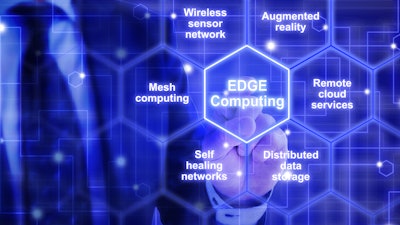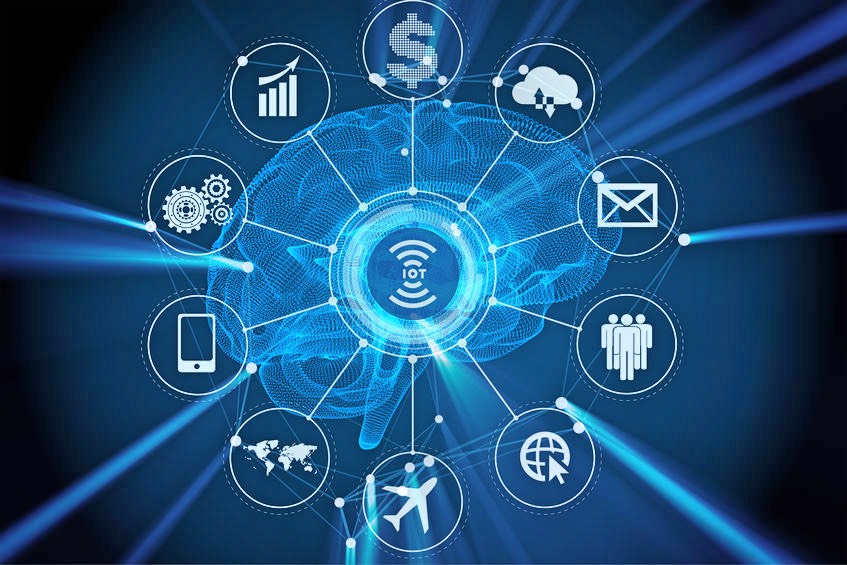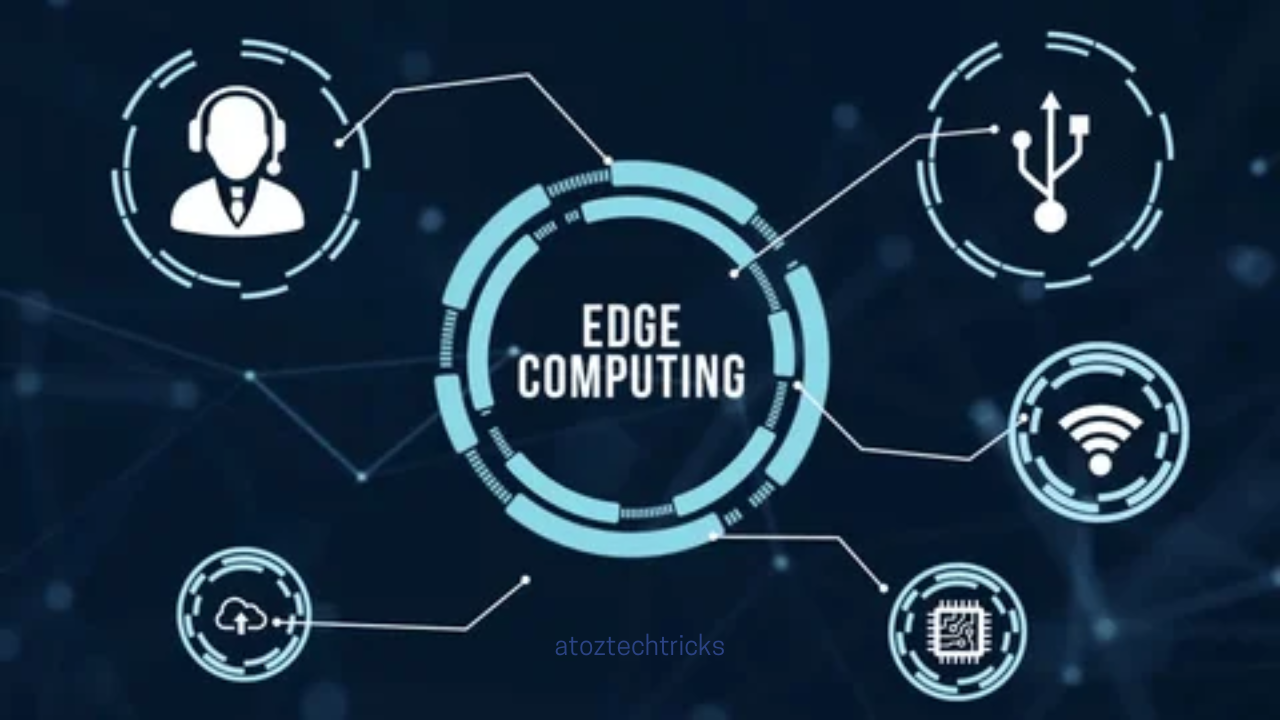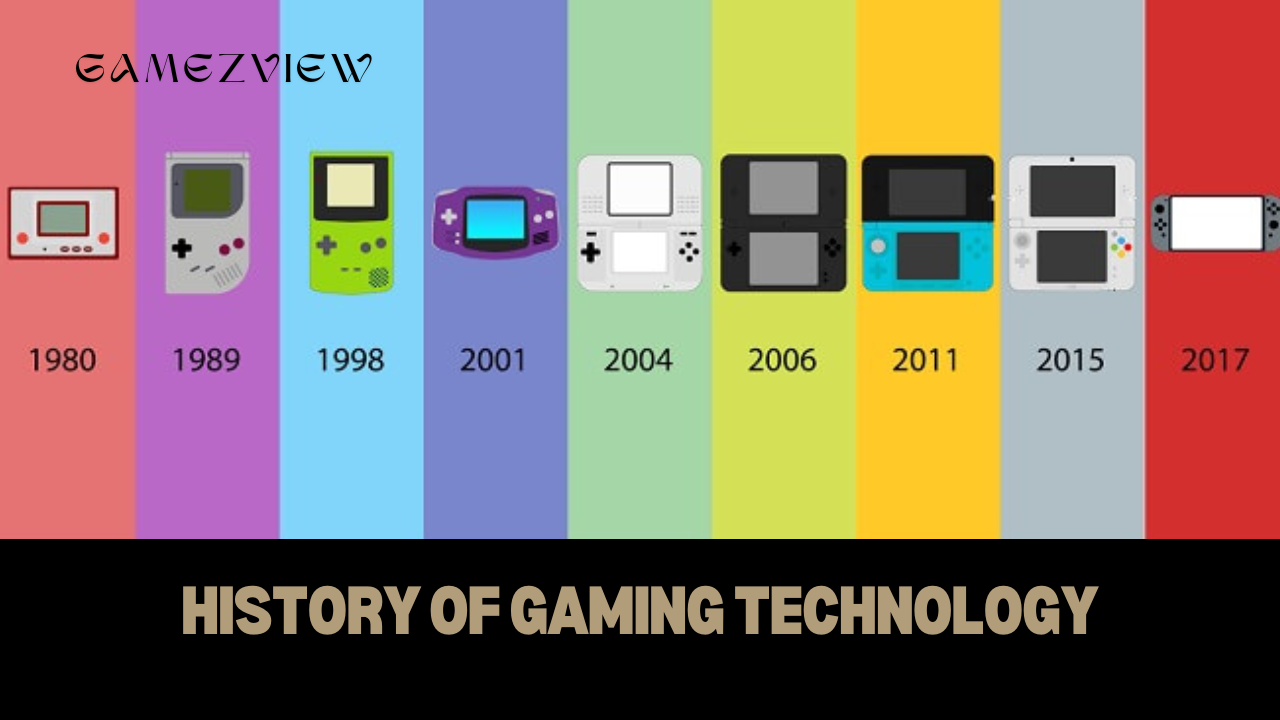As the digital world continues to evolve, the demand for faster processing, lower latency, and enhanced security in data handling has led to the emergence of edge computing as a transformative technology. Edge computing represents a shift from the traditional cloud computing model by bringing computation and data storage closer to the location where it is needed. This approach addresses many of the limitations of centralized cloud computing, offering numerous benefits for modern networks. This article delves into the potential of edge computing, its implications for various industries, and the challenges it faces in widespread adoption.
Understanding Edge Computing
Edge computing is a distributed computing paradigm that brings computation and data storage closer to the source of data generation, such as IoT devices, sensors, or local servers, rather than relying solely on centralized cloud data centres. This model aims to reduce latency, decrease bandwidth usage, enhance data privacy, and improve the reliability of systems by processing data at the “edge” of the network, closer to where the data is created.

The Evolution of Computing Models
To appreciate the significance of edge computing, it is essential to understand its place within the broader context of computing models. Traditional computing began with centralized mainframes, evolved into client-server models, and then expanded into cloud computing. Cloud computing has been a dominant force, offering scalable, on-demand resources for processing and storing vast amounts of data. However, the exponential growth of connected devices and the need for real-time processing have exposed some limitations of the cloud-centric model, particularly in terms of latency, bandwidth, and security concerns.
Edge computing addresses these challenges by decentralizing processing power and bringing it closer to the data sources. This shift is particularly crucial in scenarios where real-time processing is essential, such as in autonomous vehicles, industrial automation, and smart cities.
The Advantages of Edge Computing
The adoption of edge computing brings several key advantages that are driving its integration into modern networks. These benefits include reduced latency, improved bandwidth efficiency, enhanced security and privacy, increased reliability, and cost-effectiveness.
1. Reduced Latency
Latency refers to the time it takes for data to travel from its source to a processing unit and back again. In cloud computing, this often involves sending data across long distances to centralized data centres, which can introduce significant delays. In contrast, edge computing processes data locally or at nearby edge nodes, drastically reducing the time required for data to be processed and for actions to be taken. This low-latency environment is critical for applications requiring near-instantaneous response times, such as autonomous vehicles, healthcare monitoring, and industrial control systems.
2. Improved Bandwidth Efficiency
As the number of IoT devices and sensors continues to grow, the volume of data generated has skyrocketed. Transmitting all this data to centralized cloud servers for processing can overwhelm network bandwidth, leading to congestion and increased costs. Edge computing alleviates this burden by processing data locally, reducing the amount of data that needs to be transmitted to the cloud. This not only optimizes bandwidth usage but also allows organizations to prioritize critical data for cloud processing while handling less urgent data at the edge.
3. Enhanced Security and Privacy
Data security and privacy are paramount concerns in today’s digital landscape. Centralized cloud servers are often targeted by cyberattacks, and transmitting sensitive data over long distances increases the risk of interception. Edge computing enhances security by keeping sensitive data closer to its source, reducing the need for transmission across potentially vulnerable networks. Additionally, localized processing allows for more granular control over data access and can enable better compliance with data privacy regulations.
4. Increased Reliability
Edge computing offers greater reliability for critical applications by reducing dependence on centralized cloud infrastructure. In situations where connectivity to the cloud may be intermittent or unavailable, edge devices can continue to operate and process data independently. This is particularly important in remote locations, industrial settings, and mission-critical applications where downtime is not an option. By distributing processing power across multiple edge nodes, edge computing also reduces the risk of a single point of failure, enhancing overall system resilience.
5. Cost-Effectiveness
While setting up edge infrastructure may involve initial costs, it can lead to long-term savings by reducing the need for expensive bandwidth and cloud storage. Processing data locally at the edge reduces the amount of data that needs to be transmitted to and from the cloud, resulting in lower data transfer and storage costs. Additionally, edge computing can enable more efficient use of resources, such as energy, by optimizing processing workloads based on real-time data.
Applications of Edge Computing Across Industries
The potential of edge computing extends across a wide range of industries, each benefiting from the technology’s unique advantages. Here are some key examples of how edge computing is transforming different sectors:
1. Manufacturing and Industrial Automation
In manufacturing, the Industrial Internet of Things (IIoT) has revolutionized production processes by connecting machines, sensors, and control systems to improve efficiency and reduce downtime. Edge computing plays a critical role in this transformation by enabling real-time data processing and decision-making at the factory floor level. For instance, edge devices can monitor equipment performance, detect anomalies, and trigger maintenance actions without relying on cloud connectivity. This not only reduces latency but also enhances operational reliability and minimizes the risk of costly production halts.
2. Healthcare and Telemedicine
The healthcare industry is increasingly adopting edge computing to improve patient care and streamline operations. In telemedicine, edge computing enables real-time analysis of patient data from wearable devices, allowing for immediate responses to critical health events. For example, an edge device can analyze data from a heart monitor and alert healthcare providers to irregularities, enabling timely intervention. Additionally, edge computing can support medical imaging by processing large datasets locally, reducing the time needed for diagnosis and treatment planning.
3. Autonomous Vehicles
Autonomous vehicles rely on real-time data processing to navigate and make decisions in complex environments. Edge computing is essential in this context, as it allows vehicles to process data from cameras, sensors, and radar systems locally, ensuring rapid response times. By minimizing the reliance on cloud connectivity, edge computing enhances the safety and reliability of autonomous driving systems. Furthermore, edge computing can support vehicle-to-vehicle (V2V) and vehicle-to-infrastructure (V2I) communication, enabling more efficient traffic management and collision avoidance.
4. Smart Cities
Smart cities integrate IoT devices, sensors, and data analytics to improve urban living through better management of resources, infrastructure, and services. Edge computing is crucial for processing the vast amounts of data generated by smart city applications, such as traffic management, energy consumption, and public safety systems. By processing data locally, edge computing enables real-time decision-making, reduces latency, and enhances the overall efficiency of urban operations. For example, edge-based traffic management systems can adjust traffic signals in real time based on current conditions, reducing congestion and improving safety.
5. Retail and Customer Experience
In the retail industry, edge computing is being used to enhance customer experiences and optimize operations. For instance, edge devices can analyze data from in-store sensors and cameras to provide personalized recommendations to shoppers or optimize inventory management. Edge computing can also support advanced applications like cashier-less stores, where real-time data processing is essential for tracking customer movements, product selections, and payment transactions. By processing data at the edge, retailers can deliver faster and more responsive services, improving customer satisfaction and loyalty.
6. Energy and Utilities
Edge computing is playing a pivotal role in the energy and utilities sector by enabling more efficient management of resources and infrastructure. For example, edge devices can monitor and control smart grids, optimizing energy distribution and reducing waste. In the case of renewable energy sources like solar and wind, edge computing can process data from sensors in real time to adjust energy production and distribution based on current conditions. This not only improves the reliability and efficiency of energy systems but also supports the integration of renewable energy into the grid.
7. Telecommunications
The telecommunications industry is increasingly relying on edge computing to support the deployment of 5G networks and improve service delivery. Edge computing allows telcos to process data closer to the end-users, reducing latency and improving the quality of service for applications like video streaming, online gaming, and virtual reality. Additionally, edge computing can enable more efficient management of network resources, allowing telcos to deliver faster and more reliable services to their customers.
Challenges and Considerations in Adopting Edge Computing
While edge computing offers significant potential, its adoption is not without challenges. Organizations must address several technical, operational, and regulatory issues to fully realize the benefits of edge computing.
1. Complexity of Deployment and Management
Deploying and managing edge computing infrastructure can be complex due to the distributed nature of the system. Organizations must coordinate multiple edge nodes, ensure consistent software updates, and manage the interoperability of different devices and systems. Additionally, edge computing environments often require specialized hardware and software, which can increase the complexity and cost of deployment.
2. Security and Privacy Concerns
While edge computing can enhance security by keeping data closer to its source, it also introduces new security challenges. Edge devices are often deployed in diverse and sometimes unsecured environments, making them vulnerable to physical tampering and cyberattacks. Organizations must implement robust security measures, such as encryption, authentication, and intrusion detection, to protect edge devices and the data they process. Additionally, edge computing raises privacy concerns, as sensitive data may be processed outside of centralized and controlled environments.
3. Scalability Issues
Scalability is another challenge in edge computing, as the system must be able to handle an increasing number of devices and data sources. Organizations need to design their edge infrastructure to scale efficiently, ensuring that additional edge nodes can be deployed and managed without significant disruption. This requires careful planning and investment in scalable hardware and software solutions.
4. Interoperability and Standards
The lack of standardized protocols and interoperability between different edge computing platforms can hinder the integration of edge solutions into existing IT infrastructure. Organizations may face challenges in ensuring that edge devices and systems from different vendors can work together seamlessly. The development of industry standards and open-source frameworks can help address these issues, but widespread adoption may take time.
5. Cost Considerations
While edge computing can lead to long-term cost savings, the initial investment in edge infrastructure can be significant. Organizations must weigh the costs of deploying and maintaining edge devices, as well as the potential savings in bandwidth and cloud storage. Additionally, the cost-effectiveness of edge computing will depend on the specific use case and the scale of the deployment.

The Future of Edge Computing in Modern Networks
The future of edge computing looks promising, with continued advancements in technology and increasing adoption across industries. Several trends are likely to shape the future of edge computing in modern networks:
1. Integration with 5G Networks
The rollout of 5G networks is expected to accelerate the adoption of edge computing, as 5G offers the low-latency, high-bandwidth connectivity needed to support edge applications. The combination of 5G and edge computing will enable new use cases, such as ultra-reliable low-latency communications (URLLC), massive machine-type communications (MTC), and enhanced mobile broadband (eMBB). These applications will drive the demand for edge computing in areas such as autonomous vehicles, smart cities, and industrial automation.
2. AI and Machine Learning at the Edge
Artificial intelligence (AI) and machine learning (ML) are increasingly being integrated into edge computing systems to enable more intelligent and autonomous decision-making. Edge AI can process and analyze data in real time, allowing for faster and more accurate responses to changing conditions. This trend is expected to drive the development of more sophisticated edge applications, such as predictive maintenance, autonomous drones, and smart home devices.
3. Growth of Edge-to-Cloud Continuum
The edge-to-cloud continuum refers to the seamless integration of edge and cloud computing environments, allowing data and applications to move fluidly between the two. This approach enables organizations to take advantage of the benefits of both edge and cloud computing, optimizing processing workloads based on real-time needs. The development of hybrid cloud-edge architectures and edge orchestration platforms will play a key role in enabling this continuum.
4. Increased Focus on Edge Security
As edge computing becomes more widespread, the focus on edge security will intensify. Organizations will need to implement advanced security measures to protect edge devices, data, and networks from cyber threats. This will drive the development of edge security solutions, such as secure enclaves, edge identity management, and edge-based encryption. Additionally, regulatory frameworks may evolve to address the unique security and privacy challenges of edge computing.
5. Expansion of Edge Computing Ecosystem
The edge computing ecosystem is expected to expand, with more vendors, service providers, and developers entering the market. This growth will lead to the development of new edge computing platforms, tools, and services, making it easier for organizations to deploy and manage edge solutions. Additionally, the rise of open-source edge computing projects will foster innovation and collaboration across the industry.
Edge computing represents a significant shift in the way data is processed, stored, and managed in modern networks. By bringing computation closer to the data source, edge computing offers numerous benefits, including reduced latency, improved bandwidth efficiency, enhanced security, increased reliability, and cost-effectiveness. As industries continue to adopt edge computing, it will transform various sectors, from manufacturing and healthcare to autonomous vehicles and smart cities.
However, the widespread adoption of edge computing also presents challenges, such as complexity of deployment, security concerns, scalability issues, and interoperability challenges. Organizations must carefully consider these factors as they implement edge computing solutions.
Looking ahead, the integration of edge computing with emerging technologies like 5G, AI, and machine learning, along with the development of the edge-to-cloud continuum, will drive the future of edge computing in modern networks. As the edge computing ecosystem continues to grow and evolve, it will play a crucial role in shaping the digital landscape of tomorrow, enabling new applications and services that were once thought impossible.




